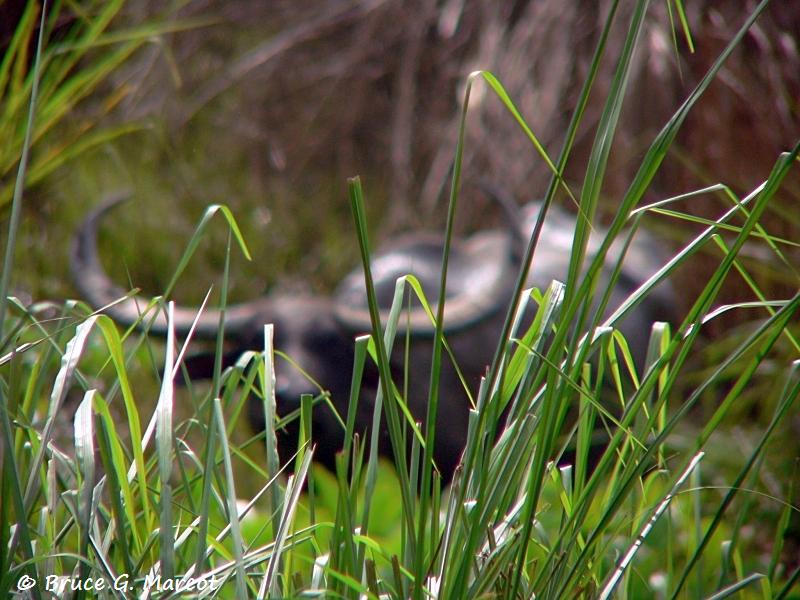
|
|
Endangered ... and Dangerous! |
|
|
Click on images for larger versions
|
Wild Asian Buffalo (Bubalus arnee), Family
Bovidae |
Credit & Copyright: Dr. Bruce G. Marcot
Explanation: Mouse over the main photo, above, to get a clearer image of a most dangerous encounter!
We are in the dense tropical bush of a remote corner of Kaziranga National Park in the state of Assam, northeast India. While pushing through the tall wetland grasses, our intrepid field team comes to a sudden halt. There, just ahead, is danger incarnate: a perturbed wild Asian buffalo on high alert.
We slowly retreat and slip back into our small boat that we are navigating along an arm of the Brahmaputra River ... when we then encounter another buffalo swimming from a sand bar island back to the main shore. Even in the water, they can be very aggressive, territorial, and essentially deadly.
Luckily, this one chose not to charge us in the water, but instead
finished its swim and climbed the muddy bank to its safe haven.
These are among the most dangerous animals to encounter in the wild,
here in a land with Bengal tigers, massive cobras, and hungry leopards.
Although they go by many names -- wild water buffalo, wild Asian buffalo, Indian buffalo, Indian water buffalo, water buffalo, Asiatic buffalo, Asiatic wild buffalo, and Asian buffalo -- they are far less common than their name proliferation suggests.In fact, there are likely less than 2,500 mature individuals of this species remaining, which occurs in isolated pockets in India and southern Asia, putting them into the endangered category. One of the key threats to this species' survival is, ironically, related to successful breeding: it hybridizes with domestic buffalo.
Next week's picture:
Tiniest Plant Plays a Big Role
< Previous ... | Archive |
Index |
Location | Search | About EPOW | ... Next >
|
|
Author & Webmaster: Dr.
Bruce G. Marcot
Disclaimers and Legal
Statements
Original material on Ecology Picture of the Week ©
Bruce G. Marcot
Member Theme of The Plexus